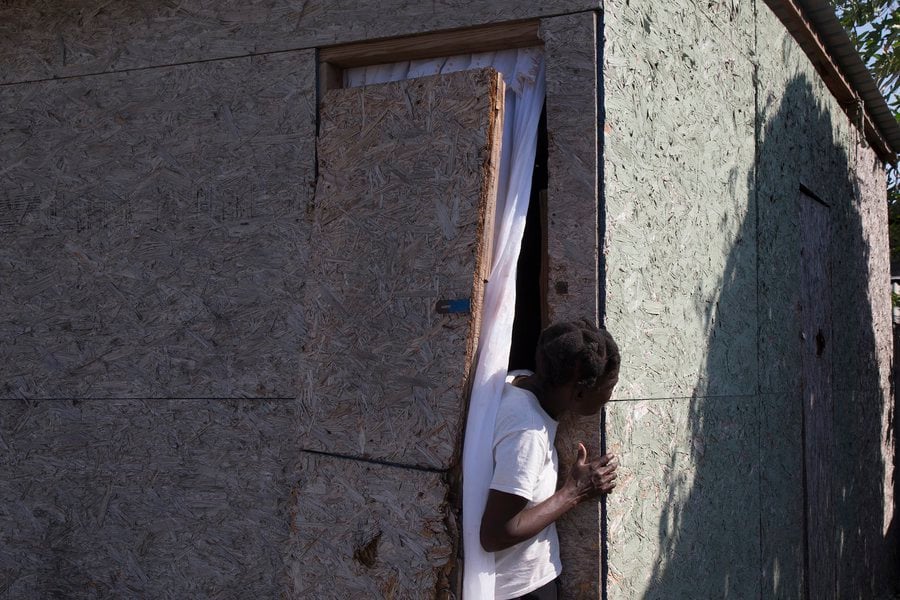Kannu/Choti
Here are two articles. The first one is about a woman in India. It's a short story about her life. If you read the article you'll see it's very unemotional. And that's what really hits you. The girl went through problems which would have laid me flat on my back. I don't think I could have done what she did. That's what happens when you aren't careful with money or save kids. You live on the thin edge. And even a tiny problem can really screw up your life. Never kids. Never let yourself get out of the habit of savings. Ever. That's your cushion. Of course we are there to help you out if you need but we wouldn't be there all the time.
And then the second article is more generic. It's about waste management. Human civilisation is throwing out waste like crazy and we will have to pay the price. Heck. We have to pay £79 per year to the council just to take away the sodding garden waste. Stupid or what? I can take care of the waste myself and save a ton.
We are facing a giant problem there and we need to sort it out.
Looking forward to seeing kannu tomorrow and to have fun with you Diya.
Fun times :)
Love
Baba
Story of Nazeya - a Waste Sorter in Nayandahalli, in Her Own Voice
http://wastenarratives.com/2015/11/13/story-of-nazeya-a-waste-sorter-in-nayandahalli-in-her-own-voice/
(via Instapaper)

My mother left me in Bangalore under the care of my uncle. He worked in a Government office. Later, he asked my family to move to Bangalore as there are more employment opportunities in the city. He managed to get us a hut to stay. My family shifted here but we didn't have any money to buy food, to eat one has to earn. I was 7 or 8 years old then and I was the eldest amongst all my siblings. We picked vegetables from river side and sold it for Rs.7 or 8 and with that I purchased dal (pulses) and rice.
I started work as an incense stick maker. I was able to buy 2 kilos of flour by rolling 4000 "battis" or incense sticks. Paid INR 20 daily, that was the only money which my family was getting.
One day a man approached me, and told me that instead of working so hard, for nothing, join my plastic factory. Initially I was skeptical as I did not know sorting and the types of materials. He challenged me by saying that I can do it. And thinking of my family, I decided to take it up… I was quick at work, and the money was decent. Things improved.
Soon after my mother contracted TB and fell very sick. We had to admit her for 3 months in the hospital. My father at that time was not working. I went to the owner and agreed to do the work of three people. He paid for my mother's treatment. I earned 600 /- and my siblings too dropped out of school. They began helping in the plastic factory and that way we supported the family.
Two to three times, our hut was burned down by the government officials, because we were living there illegally on government land. When we first came here, the hut we lived in was built of mud and leaves it was easy for it to catch fire.
Water was scarce and we had to walk two miles for it. There was no electricity and the toilet was common and out in the open. We had to go find logs to flame for cooking. I was just 8 years old and working harder. The water we used for drinking was toxic. Dead people were thrown in the place where we used to go for fetching water. A lot of people were murdered there. Earlier, people were scared of coming to Nayandahalli because of the reputation.
I was married when my mother fell sick, as that was her wish. My husband was drunkard and not at all nice to me. He made me abort four of my children and looked at women in a very wrong way. I had no say in all of this.
I have 2 children, of 12 and 8 years of age, and I want them to succeed in life. I am happy now. I have admitted them into an English medium school for that very reason. My brother and sister are married and they are leading good lives. Now, my only wish is to see my children get out of this squalor we are living in, and lead a respectable life. People speak to me with respect, seeing the amount I worked for my age.
The post here is a part of the Notes from Nayandahalli series and is a reflection of an ongoing study supported by Indian Institute for Human Settlements and WIPRO Cares.You can find the previous posts here… Post 1, Post 2, Post 3, Post 4, Post 5 and Post 6.
You can listen to the audio of the interview. It is in Dakhani.
Interviewer: Usha
Transcribed by Pinky Chandran & Ashwini Raj
Audio interview edited by Usha
Notes from Nayandahalli
Shreyas Sreenath*
"Often, in the red light of a street-lamp
Of which the wind whips the flame and worries the glass,
In the heart of some old suburb, muddy labyrinth,
Where humanity crawls in a seething ferment,
One sees a rag-picker go by, shaking his head,
Stumbling, bumping against the walls like a poet,
And, with no thought of the stool-pigeons, his subjects,
He pours out his whole heart in grandiose projects."
–Charles Baudelaire, from Fleurs du Mal (1985, trans. by William Aggeler)
You arrive at the Nayandahalli bus stop to encounter a swirl of dust and unearthed soil. Standing on the Outer Ring Road, your gaze promptly turns from the construction below to the remarkable Mysore Road flyover, zipping above you without a pause to connect the heart of the city to Ramanagara and Mysore. Right beside is another overpass, this one being the new metro line that is scheduled to connect the Bangalore University area to Vijayanagara, and then onto Majestic, the city's central transportation hub. One could easily mistake the turbulent waters rushing below, thick in viscosity, striking in its dark greens and iridescent greys, and emitting a deeply pungent aroma, for one of Bangalore's many open sewers. It is only upon further inquiry that you realize that this is the Vrishabawathi River, a tributary of the Arakavati. A river which, after sustained intake of domestic and industrial waste, has acquired a distinctly man-made quality. Nestled underneath a city consumed by vertical and horizontal growth, Nayandahalli is one of many small towns and gullies that people pass by while traveling on main roads, bridges, and flyovers. One seldom notes their existence; these are places subsumed by greater Bangalore's growth, appearing awkward and anachronistic in its midst. However, their very existence indicates that they occupy a key strategic position in the city's developmental aspirations, as areas responsible for managing the tremendous debris produced as a natural consequence of human progress. From the 19th century rubbish heaps north of London described so vividly in Dickens' Our Mutual Friend,to more recent examples such as the Thilafushi Island in the Maldives or the Zabbaleen settlements in Cairo, communities that extract value from waste have played a crucial role in recycling urban debris into material used for further growth. Their work has often gone unacknowledged, even if their actions have proven politically decisive.
The relationship that a society has with its wastes can reveal much about the circumstances of its past and present making, as well as indicate broad outlines of its future direction. Nayandahalli, as one of Bangalore's main hubs for plastic, metal, paper, and cloth recycling, is one such indicator, a yardstick that epitomizes the relationship Bangalore has with its detritusandwith its own material becoming. Tucked away in dusty corners, underneath flyovers and metro rails, it is physical evidence of the strained relationship that a city, in a moment of technophilia, has with the vast matter it leaves behind, substances with dormant value, regularly drawn upon for the continuation of urban life. It is a relationship that subdues communities that engage in waste work, the work of putting materials into reuse, through active forgetting.Over the course of our interviews with various recyclers, I am struck by how sharply this sentiment is articulated by the various waste segregators, haulers, and godown operators. "Land," says Fatima, "is the most important thing for all of us." A local activist, she comes from a family of scrap dealers.[1]Her husband, Sameer, drives a truck transporting scrap plastic to and from various godowns across the city. "Nayandahalli is filled with hundreds of godowns that constantly have to move about," she elaborated, "because in one way or another, we are all renters. Often, our godowns are rented and so are our dwellings." Fatima explained how, for rentiers, recyclers are never the first priority, especially in the midst of a booming Bangalore property market and rising rent prices. Echoing many others, she cited instances of being chastised by rentiers or neighbors for putting scrap material out in the field for loading, where it was visible for passersby. "Moreover, the haulers and segregators themselves have no place to go back to, they often sleep right in the godown, fearing for their security" she remarked, pointing to the conditions of the workers. Waste work is tolerated only when it is out of sight and out of mind.

Sameer and Fatima take us to an open stretch of land underneath the metro station, on the banks of the Vrishabawathi, where around ten godowns are situated. There we meet Ahmed Pasha, a Godown operator who has formed an association with his colleagues to lobby for political and legal recognition. "We were all situated further in the city," he says, "but when the houses started coming up, it became harder for us to move our materials around." When we ask who owns the property now, he laughs and points to the tea seller's shop next to the godown. "We'll see how long we can stay here", he remarks, turning his gaze to the unfinished metro line above.
Ahmed Pasha and his colleagues are keenly aware of the political and economic processes that delegitimize waste work. For example, a recurring problem faced by godown operators is with tax personnel who seize unsorted waste, fining godown operators upwards of Rs. 1000 when they cannot produce a bill of purchase. That is in addition to the regular bribes one pays to the police for not having professional identification. "In our old neighborhood," states Ahmed Pasha, "we didn't feel so much like outsiders.Here, we need licenses to appear legitimate". In a strange twist of fate, recyclates generate much value for public coffers even in their criminalized form. Waste, to paraphrase theorist Michael Thompson (Thompson 1979), is never simply 'dead weight'; rather, it is that in-between space that allows for one form of value to disintegrate and a new form to be born.
Recycling is paradoxical in that the further one goes down the value chain, the finer and more intricate the valuation process becomes. Here, materials become more intertwined and complex in form.Weighing scales can misguide as much as they measure, since much low value materials have a tendency to soak up moisture as well as mix with forms of biodegradable material. In plastic, lower value material often comes in darker colors, mixed with impurities such as soil or other plastic, making them more brittle and tougher to melt down. An example of this is what the recyclers in Bangalore call the 'kadak' variety of plastic—even here, 'pani-kadak', which is clearer, is more valued than 'kala-kadak', a black or brownish variety.
We meet Badri, who deals primarily in such low value recyclates, at his godown, located on an empty rented lot in a swiftly developing housing bloc. Along with medical waste and small plastic widgets, the godown houses piles of outmoded electronics, such as BSNL land-line telephones, keyboards, ball-based computer mice, as well as rubber coils, CD's, hard plastic motor casings—discarded 'state of the art' technologies of Bangalore's yesteryear, awaiting redemption and re-evaluation. Badri picks out a soiled PVC pipe with an intricate metal and cloth lining that acts as a supportive buttress for the brittle plastic. He says, "to sell this, I have to pick apart the cloth, metal, and plastic. The categories of material that I work with range in the hundreds, each with their market price." After speaking with the segregators at his godown, it is clear that the work takes months to learn, over a period where an individual has to attain the skill of multi-sensory discernment. Some plastics are differentiated upon touch, others have to be broken and smelled, and some dropped or knocked on to bring out a particular sound.
The lower down the waste value chain one goes, the more contested certain political, economic, and social relationships become. Badri explains how his landlord was more than happy to have him set up shop when the housing bloc was still undeveloped. At a time of low growth, his operation served a dual function for his rentier. Not only was his godown a constant source of rent, the hustle and bustle of the godown provided also provided cheap security from those seeking to encroach on the property. In addition to increased rents—Badri approximated that his rent had increased ten-fold—development often brings increased harassment from landlords and neighbors. "When we hosted a health clinic sponsored by a local organization for recyclers," he said, "the landlord told us that he had received complaints from neighbors about suspicious people roaming about on the property. He often threatens to rent out our space to a textile operation." Needlessly to say, segregation is dangerous work that, more often than not, brings ill health—flying glass and plastic shards, along with rusting metal and used medical supplies, are a common sight as workers hammer through materials. .
He recounts one incident when a theft had occurred at the godown. "The police had brought the suspects to the station", he notes, smiling in disbelief, "and had asked these characters why they hadn't stolen something more valuable, like gold. The officers quipped, 'if that was the case, we could have all gained something from this.'"By elaborating on some of the initial interviews we conducted, I have attempted to briefly highlight the substantial human energy and skill that is marshalled to make the vast piles of accumulated urban waste fit for reuse. But it has also been my intention to frame waste as an active material agent, and an invaluable source of value, one that shapes the way our cities function. It bears an imprint on our lives with or without our consent, or our awareness. If we are forced to think of waste, as we often do, as dormant and lifeless, if we are forced to forget its marks on our everyday existence, perhaps it is because of the particularly active role that certain parties play in political and economic subterfuge.
The work of Nayandahalli's recyclers demonstrates that the old adage "where there's muck there's brass" is self-evident. In the last instance, value is always derived from waste, one way or another.
*I would like to thank Malleswari Baddela, Kabir Arora, and Nalini Shekar from Hasiru Dala, as well as the recyclers and activists we spoke to in Nayandahalli, for their support and patience during these interviews. I also thank the Social Science Research Council for providing the research funds that made my field study possible.
The post here is a part of the Notes from Nayandahalli series and is a reflection of an ongoing study supported by Indian Institute for Human Settlements.You can find the previous post here.
Works Cited
Thompson, M. 1979 Rubbish theory : the creation and destruction of value. Oxford ; New York: Oxford University Press.
[1] All names have been changed to protect the identity of the interviewees.
*Shreyas Sreenath is a graduate student in the Department of Anthropology at Emory University. He volunteers with Hasiru Dala whenever he is in India.
The post was earlier titled as "Thoughts on Informal Waste Economy and the Challenges Faced by its Workers"












